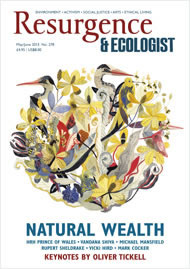For the last 10 years, I have had an almost evangelical passion for the outside world and a desire to record its activities on camera. This passion has led me to witness some of the most spectacular examples of our natural history, much of it in some of the most wonderful places in Britain.
To see a starling roost holding nearly a million birds, to hear the red-throated diver’s haunting calls over a Scottish loch, or the snipe’s drumming in its bid to attract a mate are some of the things that make Nature such an addictive and necessary part of our lives.
Nature photography is more than a profession or a hobby. For a Nature photographer, who is first and foremost a naturalist, the camera is merely a tool used to record natural activity. Used constructively, it shows our adoration of the outdoor world. Through the use of thoughtful composition and subtle lighting, the images have a greater impact and celebrate Nature at its best.
These aesthetics would not be important, however, if they did not help to raise awareness of the fact that we need Nature around us all the time in order to survive. Promoting our natural spaces through wildlife trusts and other NGOs helps them gain the recognition they deserve and present them as being accessible and wonderful places to visit where we can be a part of Nature regardless of whether we choose to photograph it or not.
There is something therapeutic to the soul about a photographer’s involvement with our natural world. Knowing it has all been here long before any of us is an amazing thought and is arguably one of the key motivations to become involved with it. I love staying close to home in my bid to record Nature. There is something special about finding a place locally and sitting, waiting and observing to see what turns up.
I am often privileged to view the lives of relatively overlooked creatures carrying out their daily routines, and on occasion to witness something spectacular such as a kingfisher zooming past or a fox trotting along its territory at dusk or dawn. This patient and respectful approach to my subjects allows me to ‘leave only footprints’ in the environment and means that a creature that may already be pushed to the limit of surviving won’t be put under any further or undue pressure.
The role of effective and responsible photographic fieldwork shows in the quality of the images secured, and more importantly in whether the subject is relaxed in its surroundings – which should be the goal of any Nature photographer.
The work of Ansel Adams provides much influence to photographers and non-photographers alike. His use of modest equipment, compared to today’s high-end telephoto lenses and noise-conscious camera bodies, meant that the images he captured were revolutionary for his time. The impact and eye-catching nature of his works makes his images instantly recognisable and has meant that Adams has become a monument to the art world.
Adams was also an avid campaigner for environmental matters in Yellowstone National Park and saw the importance of strong imagery to influence his audience. Through his skill and vision, so much of what he saw in his mind’s eye has been preserved for many more to view and benefit from.
Like those of all respectful Nature photographers, Adams’ images leave a long-lasting legacy that serves to document our ever-changing world and portray his deep concern for Nature.







